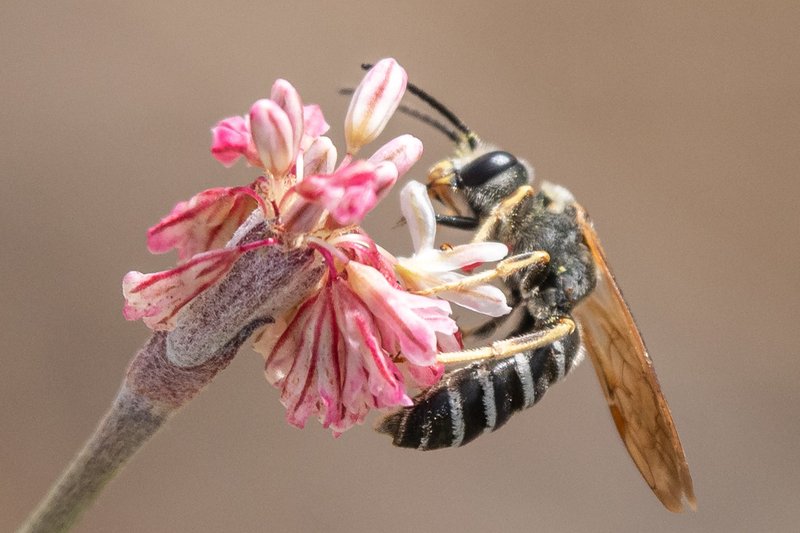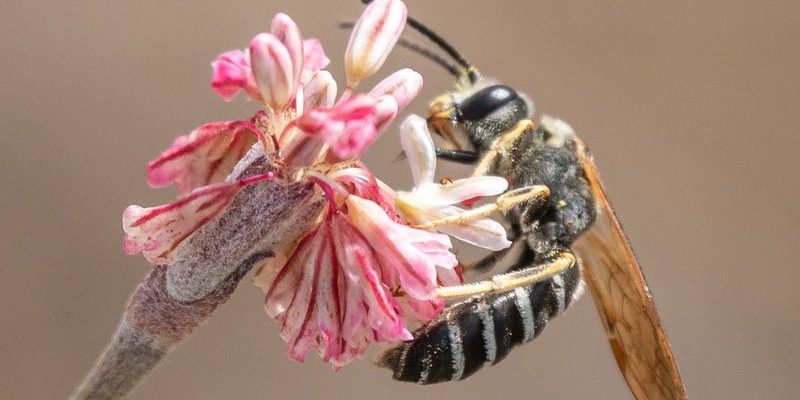
Identifying a sweat bee isn’t as tricky as it sounds, but there are a few key characteristics you should keep in mind. First off, these little guys come in a variety of shapes and colors. From metallic greens to dull browns, their appearance can change quite a bit. So, let’s break down some easy ways to recognize them and understand their behavior, so next time you feel a gentle buzz, you’ll know exactly who’s visiting.
What Are Sweat Bees?
You might be wondering, “What exactly qualifies as a sweat bee?” Well, sweat bees are part of the family Halictidae. There are over 1,000 species of these bees, and they can be found all over the world. They’re often solitary, meaning they generally don’t live in large colonies like honeybees do. Instead, they’re more like independent little workers, each carving out their own niche in the environment.
Unlike many other bees, sweat bees are frequently attracted to human sweat. This behavior stems from their need for salt and moisture, which they can find in our perspiration. Picture this: you’re enjoying a backyard barbecue, and a tiny bee hovers around your arm. It’s probably not out to sting you, but rather on a mission for a quick salt snack!
Physical Characteristics of Sweat Bees
Identifying sweat bees starts with their physical features. They are usually small, measuring about 0.08 to 0.5 inches in length. Their bodies can be shiny and metallic or dull and fuzzy. Here are some common traits to look out for:
- Color: They can range from bright metallic hues like green and blue to more muted tones like brown or black.
- Body Structure: Sweat bees typically have a slender and elongated body with distinct segments. Their legs may appear hairy, which helps them collect pollen.
- Eyes: They have large, prominent eyes, perfect for spotting flowers and potential food sources.
These features can help you distinguish sweat bees from other types of bees, like honeybees or bumblebees, which tend to be larger and more robust.
Behavior and Habitats
When trying to identify sweat bees, you’ll want to pay attention to their behavior and the environments they thrive in. Sweat bees are often seen flying close to the ground, as they prefer flowers that grow low to the ground. They’re usually solitary, with some species nesting in the ground, while others build nests in wood or plant stems.
These bees are more active during warm, sunny days, especially in the spring and summer. If you’re in a garden or near blooming flowers, that’s prime territory for spotting them. They love to visit flowers for nectar and pollen, playing a vital role in pollination. This means they contribute significantly to our environment, helping plants grow and produce food.
How to Spot Sweat Bees vs. Other Bees
If you’re keen on becoming a sweat bee detective, here’s how you can distinguish them from other bees you might encounter.
- Sweat Bees vs. Honeybees: Honeybees are generally larger and have a chunkier appearance. Also, they have less metallic coloring and more brown stripes.
- Sweat Bees vs. Bumblebees: Bumblebees are fuzzy and bulky compared to the sleeker sweat bees. Bumblebees also tend to be louder in flight.
- Behavioral Differences: While honeybees and bumblebees live in colonies and can be more aggressive in defending their hives, sweat bees are usually non-aggressive and tend to mind their own business, focusing on foraging.
By observing these details, you’ll become more confident in identifying sweat bees when you see them buzzing around.
Common Misconceptions About Sweat Bees
There are a few misconceptions surrounding sweat bees that can lead to confusion. For instance, many people think all bees are aggressive and will sting at the slightest provocation. Here’s the thing: sweat bees are generally not aggressive. They’re more focused on gathering resources and are unlikely to sting unless they feel threatened, like any other bee species.
Another misconception is that most bee species are identical. While sweat bees do share some traits with other bees, their unique colors, sizes, and behaviors set them apart. By understanding these differences, you’ll gain a greater appreciation for these incredible pollinators.
The Importance of Sweat Bees in Ecosystems
You might be surprised to learn just how important sweat bees are to our ecosystems. These tiny creatures contribute significantly to pollination, which is essential for the growth of many fruits, vegetables, and flowers. Their role helps maintain biodiversity and keeps food supplies stable.
By visiting flowers, sweat bees help plants reproduce, spreading pollen from one blossom to another. This not only benefits the plants but also supports other wildlife, providing habitats and food sources. So, every time you see a sweat bee, remember that it’s not just a little bug buzzing around—it’s a crucial player in our ecological balance.
How to Attract Sweat Bees to Your Garden
If you want to encourage sweat bees and other pollinators to visit your garden, try these simple tips:
- Plant Native Flowers: Choose flowers that are native to your area, as they’re more likely to attract local bee species.
- Provide Nesting Sites: Leave small patches of bare soil or dead plant material, which can provide nesting opportunities for ground-nesting sweat bees.
- Avoid Pesticides: Use natural pest control methods to create a safe environment for bees and other beneficial insects.
By creating a bee-friendly garden, you can support these important pollinators and enjoy their charming presence all summer long.
In conclusion, recognizing sweat bees is easier than you might think! With their unique looks, behaviors, and vital role in our ecosystem, these tiny pollinators deserve our attention and care. The next time you feel that gentle tickle on your arm, remember to take a closer look. You might just have a little sweat bee appreciating you while it seeks out a tasty snack!

